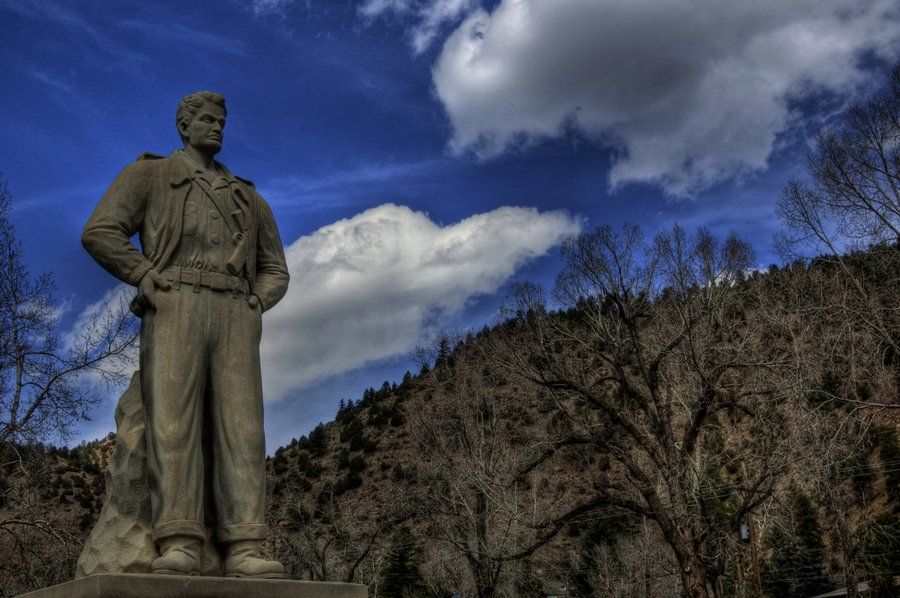Photo by ~djohn9
When I saw this Steve Canyon statue over at the Hermes Press blog (they've published a collection of the seven Steve Canyon issues from Dell’s Four Color comics), I wondered what the hell a Steve Canyon monument was doing in Idaho Springs, Colorado. Canyon's creator Milton Caniff never lived there, nor does the town figure prominently in the comic strip character's adventures.
The Historic Idaho Springs website doesn't offer many details, saying only that the statue was erected as part of a "publicity stunt" by the area's Jaycees in the '50s. Oddly, the full story is told in the historical archives of a completely different city: Dayton, Ohio. Columnist (and friend of Caniff) Roz Young wrote for the Dayton Daily News for more than 25 years and penned a 1997 article celebrating the 50th anniversary of Caniff's famous character. What's cool about the story is its reminder of just how important comics used to be to the general population in the US.
The article reveals that Idaho Springs was founded as a gold-rush town and for years held a festival to commemorate its roots until the celebration was abandoned during the Depression. After WWII, the town's Junior Chamber of Commerce wanted to start a new festival, but instead of focusing on the town's history, they decided to capitalize on the relationship between their natural geography and the last name of Caniff's popular, new fictional character. In 1947, only a few months after Steve Canyon made his first appearance in newspapers, Idaho Springs renamed nearby Squirrel Gulch as Steve Canyon and Caniff himself attended the ceremony. The dedication and its accompanying festival was such a success that three years later the Indiana Limestone Company donated the statue as a memorial to all servicemen. The US Air Force Reserve shipped it for free and Caniff again attended the dedication.
But without any real ties to the community, the Steve Canyon memorial became less important as time went on. By 1997, when Young wrote her anniversary article, the statue didn't even appear in the town's "Things to Do and See" brochure and only Idaho Springs' oldest residents even knew who Canyon was. Young's article is worth reading, particularly as a cautionary tale about the fleeting nature of popular art and comics; especially newspaper comics. Fourteen years later, as the newspaper and comics industries are both undergoing extreme transitions, Caniffs observation that "anything you or I do in the newspapers will not last" is as gut-punchingly relevant as ever.

